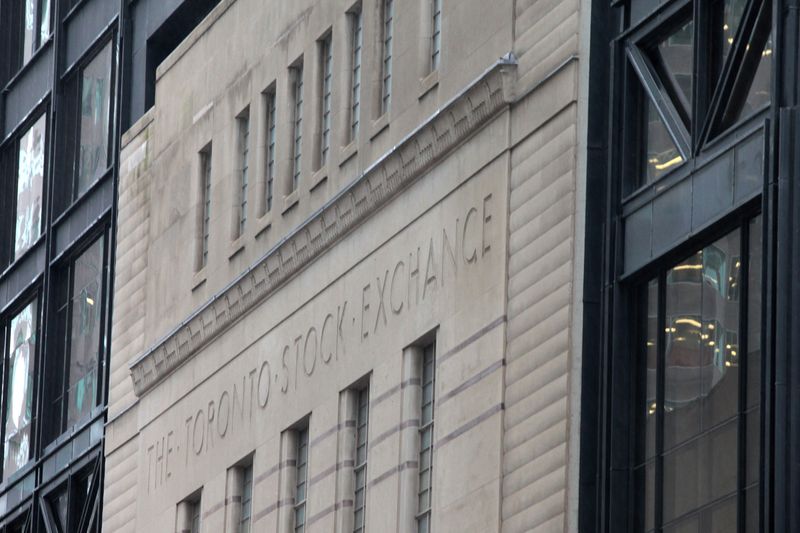As a trader hunched over three monitors in Toronto’s financial district put it to me yesterday, “The devil’s in the details with these trade talks.” He wasn’t wrong. Canadian markets are showing cautious optimism this morning following Washington’s signal that it’s ready to revisit key trade frameworks with Ottawa.
The S&P/TSX composite index futures edged up 0.3% in pre-market activity, building on yesterday’s modest gains after U.S. Trade Representative Katherine Tai confirmed plans to address longstanding irritants in the U.S.-Canada trading relationship. Bay Street analysts see this as potentially easing tensions that have simmered since aluminum and steel tariff disputes began under the previous U.S. administration.
“We’re seeing a relief rally, but investors should temper expectations,” explains Priya Misra, head of economic research at TD Securities. “The actual negotiations will likely stretch well into 2025, regardless of who wins the White House.”
The renewed dialogue touches several sensitive sectors for Canadian markets. Forestry stocks like West Fraser Timber and Canfor Corporation saw early movement on hopes for resolving the perennial softwood lumber dispute, which has cost Canadian producers an estimated $5.6 billion in tariffs since 2017, according to Natural Resources Canada data.
Meanwhile, Bank of Canada Governor Tiff Macklem has emphasized the significance of trade certainty to Canada’s economic outlook during his latest monetary policy report. “Predictable cross-border commerce directly impacts business investment decisions,” Macklem noted, pointing to how trade uncertainty has previously delayed capital expenditures across manufacturing sectors.
What’s particularly noteworthy is the timing. These discussions emerge as both nations grapple with inflation challenges and slowing economic growth. Statistics Canada revealed yesterday that core inflation remained sticky at 2.7% in April, complicating the central bank’s path toward potential rate cuts later this year.
The renewed trade focus also arrives as the U.S. and Canada navigate an increasingly complex global trade landscape. China’s recent economic data showed industrial output slowing to 6.7% in April, below analysts’ expectations, potentially weakening demand for Canadian resources. This creates added pressure for securing more predictable North American trade channels.
I spoke with Jennifer Reynolds, president of the Toronto Finance International hub, who highlighted a notable sentiment shift among institutional investors. “The prospect of trade normalization is creating space for longer-term planning in sectors that have faced years of uncertainty,” Reynolds said. “We’re seeing particular interest in clean technology investments that span the border.”
Energy stocks may see particular movement as the talks progress. The integrated North American energy market faces significant transition pressures, with Canada’s oil producers navigating U.S. climate policies while American refiners rely on Canadian heavy crude inputs. The S&P/TSX Energy Index has lagged broader market gains this year, up just 2.1% compared to the composite’s 5.4% rise.
“The real question is whether these talks can produce more than just temporary goodwill,” notes Gordon Ritchie, former Canadian ambassador for trade negotiations. During our conversation, Ritchie emphasized that previous trade tensions have created lasting changes in supply chain strategies. “Many Canadian manufacturers have already diversified their customer base away from U.S. dependence. That structural shift won’t reverse overnight.”
For investors watching the TSX, several indicators merit attention as the trade dialogue unfolds. Export-dependent sectors like manufacturing, which represents approximately 10% of Canada’s GDP according to Industry Canada, may show heightened sensitivity to negotiation developments. The Canadian dollar, currently trading near 73 cents U.S., could strengthen if talks progress constructively.
What’s clear from conversations with market participants is that while today’s futures activity reflects optimism, the path ahead contains significant variables. Canada’s Deputy Prime Minister Chrystia Freeland has maintained that any new agreements must respect Canadian sovereignty in key areas like digital taxation and cultural industries.
“We’ve seen this movie before,” a portfolio manager at RBC Global Asset Management told me, requesting anonymity to speak candidly. “Initial enthusiasm often gives way to hard-nosed negotiation. Smart money is watching for concrete outcomes rather than announcements.”
For retail investors weighing Canadian market exposure, sectors with established U.S. market access and limited tariff exposure—like technology and healthcare—may offer stability while trade discussions progress. The S&P/TSX Information Technology index has outperformed the broader market this year, up 8.7% year-to-date.
As morning coffee cups empty across Bay Street, the mood might best be described as “cautiously constructive.” The real test will come as negotiators move beyond press releases to the thorny details of cross-border commerce in an election year for both countries. For now, Canadian futures suggest the market is willing to give diplomacy a chance.






